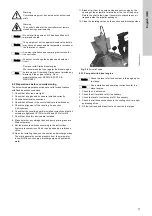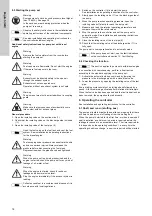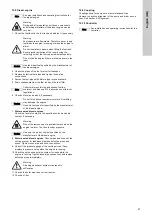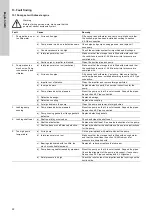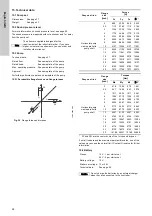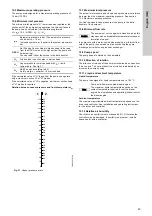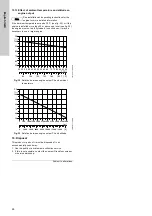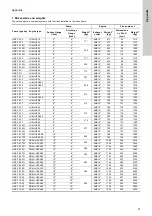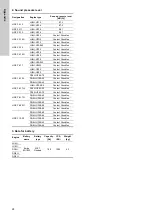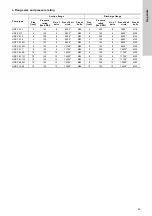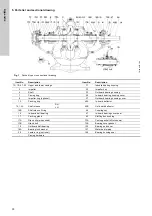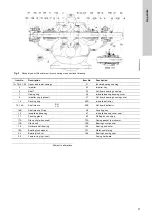
English (GB)
18
8.3 Starting the pump set
Additional safety instructions for pump set with diesel
engine
General procedure
1. Open the isolating valve on the suction side (1).
2. Check that the isolating valve on the discharge side is closed
(11).
3. Open the isolating valve of the test pipe (9).
4. Switch on the controller (14) and start the pump.
See installation and operating instructions for the controller.
5. Slowly open the isolating valve (11) on the discharge side of
the pump.
6. When the pump reaches operating pressure, open the
isolating valve sufficiently to reach the duty point.
7. Measure and read the relevant operating parameters and
compare them with the rated values.
8. Stop the pump via the controller and set the pump set to
automatic mode. See installation and operating instructions
for the controller.
9. Close the isolating valve of the test pipe (9).
10. Check that the isolating valve at the discharge side (11) is
fully open.
The pump set is now operational and in automatic mode.
8.4 Checking the function
In connection with commissioning, perform a final test run
according to the standard applying to the pump set:
1. Activate the automatic startup command by lowering the
pressure in the discharge pipe with a closed fuel valve.
2. Lower the pressure by opening the isolating valve of the test
pipe.
Every starting cycle consists of a starting phase followed by a
pause. A failure warning activates after six failed start attempts.
When the fuel valve has been opened and the fault indication has
been removed, the pump should start properly.
9. Operating the controller
See installation and operating instructions for the controller.
9.1 Shaft seal run-in (stuffing box)
The pumped liquid lubricates the seal faces, meaning that there
will be a certain amount of leakage from the stuffing box.
When the pump is started for the first time, or when a new shaft
seal is installed, a certain run-in period is required before the
leakage is reduced to an acceptable level. The time required for
this depends on the operating conditions, i.e. every time the
operating conditions change, a new run-in period will be started.
Warning
Some pump sets have a sound pressure level higher
than 70 dB(A). See page 28.
In these cases, wear hearing protection when the
pump set is running.
Note
Observe the safety instructions in the installation and
operating instructions of the individual components.
Note
See also installation and operating instructions for
the controller and diesel engine.
Warning
Remove the fuel canisters from the room before
starting the pump set.
Warning
Fuel vapours are flammable. Do not start the engine
if there are fuel vapours in the room.
Warning
Exhaust must be directed safely to the open air
through the exhaust system.
Exhaust must not escape indoors.
Operation without an exhaust system is not safe.
Warning
The pump set must not be started without a coupling
guard.
Warning
Make sure that persons cannot accidentally come
into contact with hot exhaust pipes.
Note
Open the fuel valve on the fuel tank and vent the fuel
system. See installation and operating instructions
for the diesel engine.
Warning
Fuel escaping under pressure can penetrate the skin
and cause serious injuries. Always release the
pressure before disconnecting the fuel pipes.
Repressurise when the pipes have been tightened.
Warning
When the pump set is primed, pressurized and the
engine is started, check the pump set for any kind of
leakage of oil, water or fuel.
Warning
When the engine is started, check for exhaust
leakage and abnormal noise level.
Stop the engine immediately if the exhaust system is
leaking.
Note
Collect excess fuel in a container and dispose of it in
accordance with local regulations.
Note
If the pump does not start, see the fault indications
on the controller and section
.
Note
This section applies to pump sets with diesel engine.














